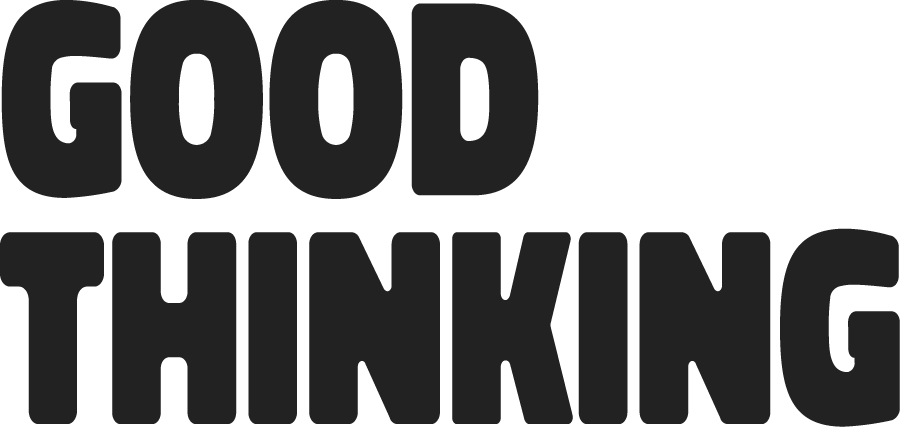How to Be Naturally Strategic
The Strategic Leader Podcast- Series 1, Episode 1
In our first ever episode of The Strategic Leader podcast we unpack what it truly means to be strategic. We often hear the term "strategic" thrown around, especially in leadership circles, but many of us struggle with what it actually looks like in practice. Is it reserved for high-level executives? Do you have to be a "born strategist" to be good at it?
The short answer: No. Being strategic is a way of thinking that anyone can adopt, regardless of role or seniority. And it’s not as complex or over-engineered as many make it out to be. In fact, with the right mindset and approach, anyone can become more naturally strategic.
In this episode, we distill strategy down to three key elements that can help you develop strategic thinking in your day-to-day work. Here’s a summary of those key takeaways:
1. Future Focus: Eyes on the Horizon
A core element of strategic thinking is being future-focused. To be strategic, you need to constantly ask yourself: Where are we going?
When you're caught up in the demands of the present, it’s easy to get trapped in the details of the tasks right in front of you. But strategic thinkers lift their heads from the grind and look ahead. This "eyes on the horizon" mindset helps you plan for what’s coming, not just react to what’s right in front of you.
For example, let’s say you have an urgent vacancy to fill in your team. While the task of recruiting may demand immediate action, a strategic approach would involve taking a step back to understand why that role keeps coming up in the first place. Are there recurring gaps in the business that you could address by building a stronger internal talent pipeline or improving retention? Strategic thinkers aren’t just solving today’s problem—they’re planning for a more sustainable future.
2. Breadth: See the Bigger Picture
Strategy isn’t just about focusing on what’s directly in front of you; it’s also about understanding how your decisions impact the wider organisation. Strategic thinking requires you to take a step back and ask yourself: What else is affected by this decision?
In this episode, we dive into an example related to talent management. If you’re facing challenges filling a role, a strategic approach would ask: What other areas in the business will be impacted if we solve this problem in one way versus another? For instance, filling a vacancy may not just be about the immediate recruitment process—it could also involve broader considerations like how your company’s Learning & Development (L&D) programs are structured or how talent is positioned within the organisation.
Strategic thinking helps you see not just the immediate problem but also the long-term impact of your decisions on various parts of the company. It’s about considering the system as a whole and recognising the interconnectedness of different initiatives.
3. Why This Matters: Connect to Purpose and Strategy
The final piece of the strategic puzzle is asking why. Why are we doing this? Why is this important? In leadership and decision-making, it’s easy to get swept up in the urgency of a situation and skip over this crucial question. But truly strategic thinking requires you to tie your actions back to the organisation’s broader goals and vision.
As we discuss in the episode, asking why forces you to link day-to-day decisions to long-term objectives. For instance, if you’re tackling a recruitment issue, you need to think beyond just filling a position. Ask how your decision fits into the larger strategic goals of the company—such as improving employee engagement, reducing turnover, or enhancing organisational agility. When you can connect your decisions to the bigger picture, you’re ensuring that your actions are aligned with the broader strategy and purpose of the business.
Putting It All Together: A Strategic Mindset for Every Day
So, what’s the takeaway? To become more strategic, you don’t need to reinvent the wheel. It’s about shifting your perspective and consistently asking the right questions:
Where are we going? (Eyes on the Horizon)
What else is impacted by this? (Seeing the Bigger Picture)
Why is this important? (Connecting to Purpose)
By approaching your work with these three questions in mind, you’ll start to think more strategically without needing to be an expert in strategy. It’s about making strategic thinking a natural part of how you approach challenges in your day-to-day work.
We dive deeper into these concepts and share real-life examples from our coaching and leadership work. Whether you're stepping into a leadership role or looking to refine your strategic thinking skills, this episode offers practical insights to help you think bigger, broader, and more purposefully.
Subscribe and Stay Tuned
Want to hear more about how to bring strategic thinking into your work? Subscribe to The Strategic Leader podcast and stay tuned for upcoming episodes where we’ll explore more tools, models, and tips for refining your strategic brilliance.
Have any thoughts on this episode? Let us know how you’re applying these strategies in your work by sharing your comments below or reaching out to us on social media.
By incorporating these three elements into your daily approach, you’ll be well on your way to navigating the complexities of leadership and strategy with confidence. It’s time to stop overcomplicating strategy—and start making it work for you.
